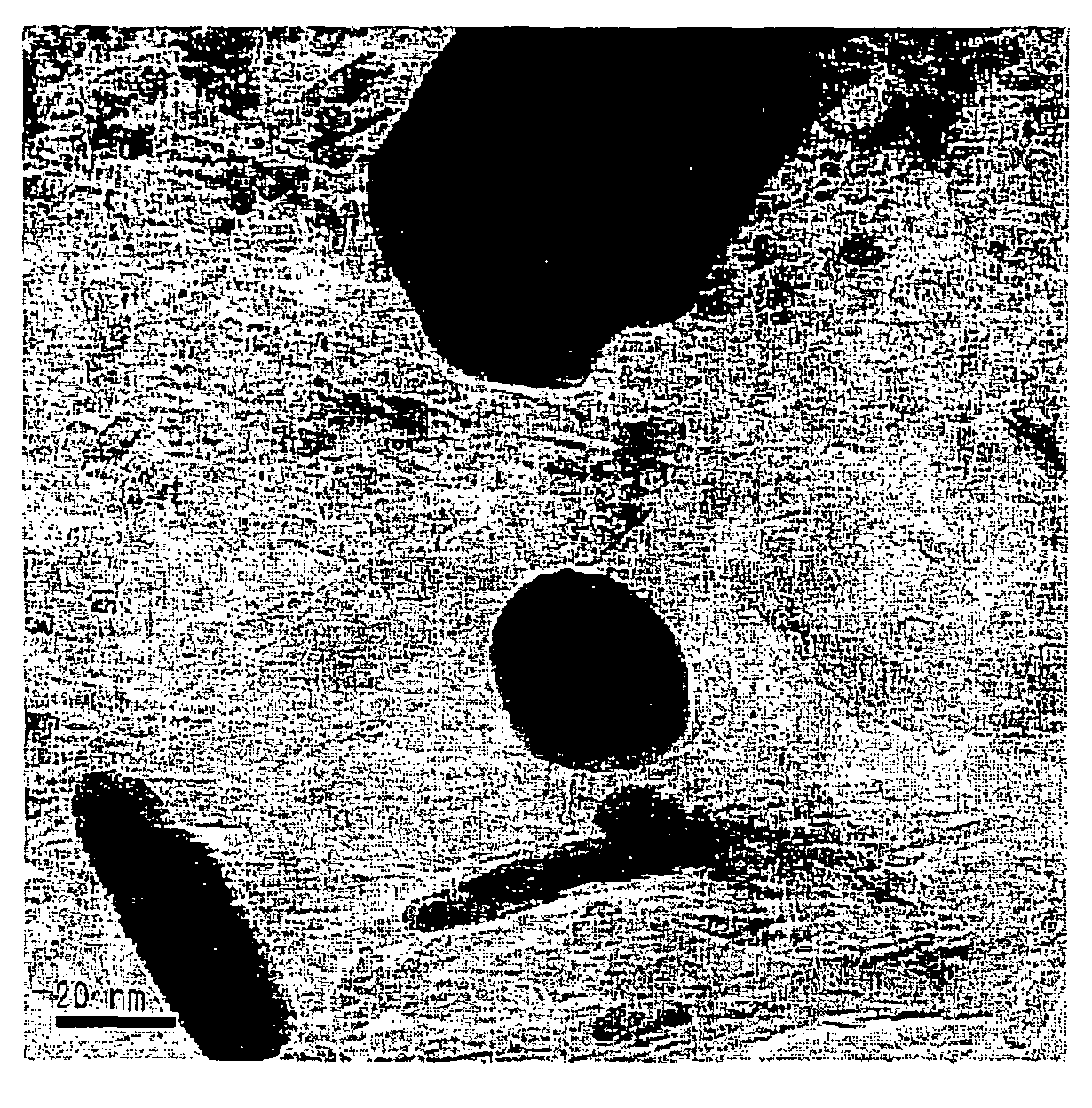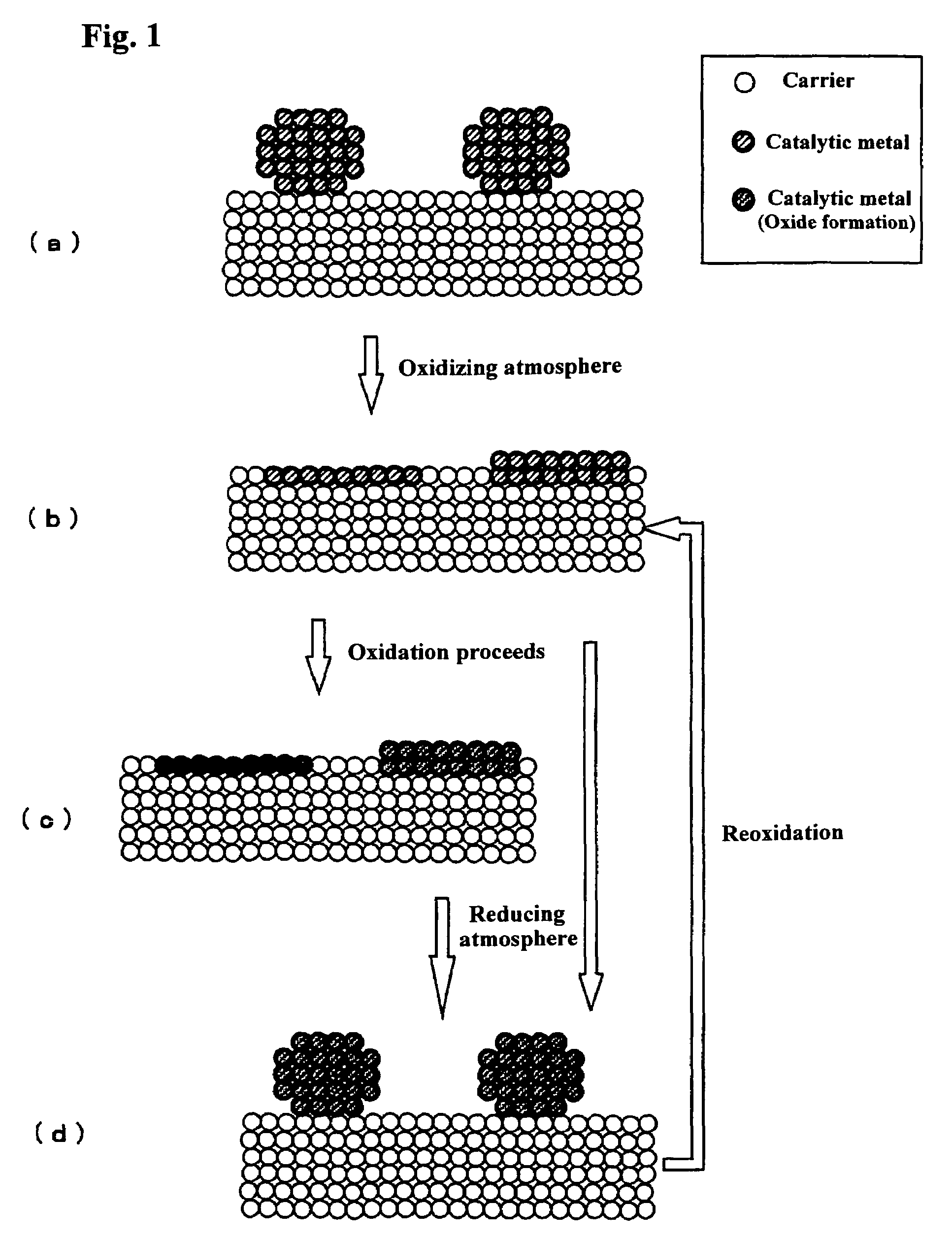Catalyst
a catalyst and catalyst technology, applied in the field of catalysts, can solve the problems of limiting the improvement of activity, and achieve the effect of high reaction activity and high durability
- Summary
- Abstract
- Description
- Claims
- Application Information
AI Technical Summary
Benefits of technology
Problems solved by technology
Method used
Image
Examples
example 1
Pt / CZO Catalyst
[0038]A metal salt solution was prepared by diluting 22.01 g of a nitric acid solution of dinitrodiamine platinum (Pt Concentration: 4.54 wt %) with distilled water to 100 mL in a measuring flask. Gate other hand, 2.21 g of polyethylene imine (PET) having an average molecular weight of 50000 were diluted with distilled water to 100 mL in a measuring flask. And 10 mL of the metal salt solution and 4 mL of the PEI solution were mixed and stirred, the mixed solution was then added dropwise to a solution in which 10 g of CZO were dispersed, ammonia was added dropwise until pH 10 was obtained, and a hybrid complex was caused to be adsorbed on a CZO carrier. The surface area of this CZO catalyst is 67 m2 / g and the cerium concentration is 40 mol % (equivalent to 48.2 wt % of the catalyst).
[0039]Next, a dispersion liquid in which this carrier is dispersed was heated to 70° C., 30 mL of an aqueous solution of 2.5 wt % hydrazine were added dropwise for a duration of one hour, a...
example 2
Pt / Pd / CZO Catalyst
[0040]A mixture of 17.84 g of a nitric acid solution of dinitrodiamine platinum (Pt concentration: 4.54 wt %) and 4.32 g of a nitric acid solution of palladium dinitrate (Pd concentration: 4.40 wt %) was prepared, and this mixture was diluted with distilled water to 100 mL in a measuring flask, whereby a metal salt solution was obtained. And the same PEI solution as in Example 1 was added to 10 mL of this precious metal salt solution and other operations were performed by the same process as in Example 1, whereby a Pt / Pd / CZO catalyst was obtained. When the catalyst after drying was also observed under a TEM, the presence of particles of about 3 nm was verified. When an analysis by EDX was performed, the presence of Pt and Pd was verified within single particles.
example 3
Pt / Rh / CZO Catalyst
[0041]A mixture of 18.06 g of a nitric acid solution of dinitrodiamine platinum (Pt concentration: 4.54 wt %) and 1.81 g of a solution of rhodium nitrate (Rh concentration: 10.0 wt %) was prepared, and this mixture was diluted with distilled water to 100 mL in a measuring flask, whereby a metal salt solution was obtained. And the same PEI solution as in Example 1 was added to 10 mL of this precious metal salt solution and other operations were performed by the same process as in Example 1, whereby a Pt / Rh / CZO catalyst was obtained. When the catalyst after drying was also observed under a TEM, the presence of particles of about 3 nm was verified. When an analysis by EDX was performed, the presence of Pt and Rh was verified within single particles.
PUM
| Property | Measurement | Unit |
|---|---|---|
| specific surface area | aaaaa | aaaaa |
| particle size | aaaaa | aaaaa |
| temperature | aaaaa | aaaaa |
Abstract
Description
Claims
Application Information
 Login to View More
Login to View More - R&D
- Intellectual Property
- Life Sciences
- Materials
- Tech Scout
- Unparalleled Data Quality
- Higher Quality Content
- 60% Fewer Hallucinations
Browse by: Latest US Patents, China's latest patents, Technical Efficacy Thesaurus, Application Domain, Technology Topic, Popular Technical Reports.
© 2025 PatSnap. All rights reserved.Legal|Privacy policy|Modern Slavery Act Transparency Statement|Sitemap|About US| Contact US: help@patsnap.com



